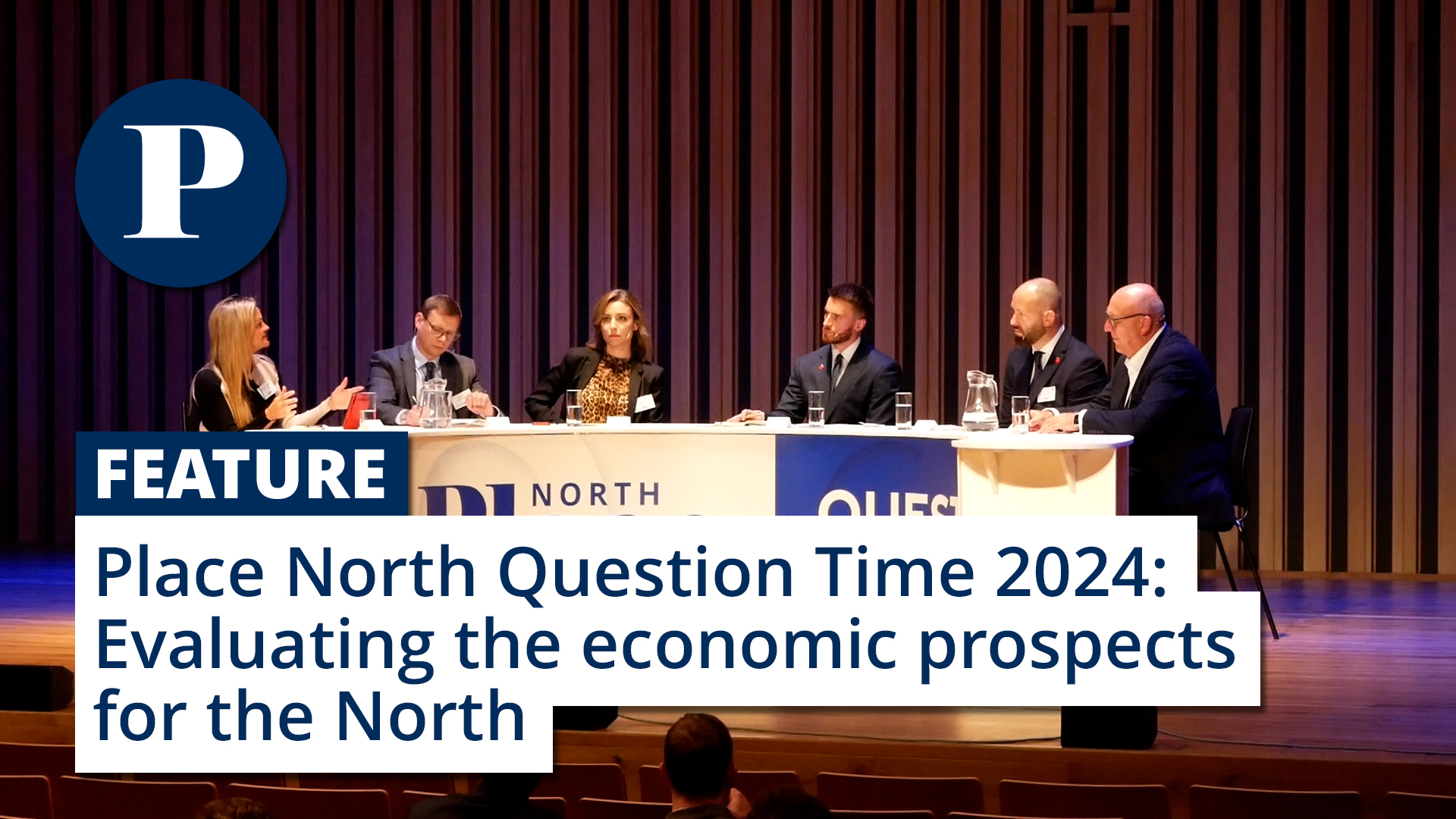The Subplot
The Subplot | Offices look good, sheds, shopping centres
Welcome to The Subplot, your regular slice of commentary on the business and property market from across the North of England.
THIS WEEK
- The North’s office markets are not the disaster zone some feared but planning for future growth poses problems.
- Elevator pitch: your weekly rundown of who and what is going up, and who is heading the other way
WORKSPACE HEADACHE
Office property’s unknown unknowns
Does anybody yet know what the future of office workspace looks like? Whilst investors wonder (and worry), the North’s planners are preparing a fall-back position.
Across the Atlantic there’s a lot of anxiety, the result of too many frothy valuations of too much office floorspace. Some banks are heavily exposed to office-property risk – very heavily if you believe some sources. Data from Bayes Business School – to be published in April – will tell us how much debt is wrapped up in UK offices, and how troubled it looks. But we don’t need debt numbers to tell us workspace has some issues to confront.
Proceed with caution
The occupational market data needs to be read with care. For instance, it may be that figures are flattered by deals postponed over the last few years, then landing in late 2022 and early 2023. Even with that caution, things are not as they seem. For instance, in 2022 Leeds office take-up was 888,600 sq ft, 17% down on 2021. But look closely at Avison Young’s Big Nine data goldmine and the fall is down to a slump in Leeds’s (modest, even fun-sized) out-of-town office market. The city centre market actually grew in 2022, up from a shade over 600,000 sq ft to 618,000 sq ft. The volume of empty office space is stuck at about 1.1m sq ft – a 7% vacancy rate. That is pretty much on trend.
Looking good
A quick tour d’horizon suggests good vibes elsewhere, too. Liverpool had exactly the opposite experience to Leeds: a revival of the out-of-town market boosted a lacklustre city centre scene. Out-of-town take-up surged from 125,000 sq ft in 2021 to 220,000 sq ft in 2022. Newcastle’s office market looked similar – out-of-town did the heavy lifting, although the tiny city centre market managed to grow faster. In the vastly bigger Manchester market you don’t need to look deeply at the figures to see good things: annual take-up to 2.3m sq ft, 8% above the 10-year average. Both city centre and out-of-town markets outperformed in the fourth quarter, up 38% and 44% respectively on 10-year averages. The Manchester vacancy rate dived during 2022, down from an uncomfortable 11% to a less uncomfortable 9%.
Bits and pieces
But this big picture stuff has its limits – and Leeds planners have been mulling a potential solution to providing floorspace in an office market that is more fragmented than ever. It comes in the form of preparation for Leeds’s 2040 Local Plan – the document that will control what gets built where over the years from 2028. It will replace the existing plan, written in the very different world of 2010.
Boxing clever
The idea is to do some analysis of exactly who needs office space – are they techies, or lawyers, or creatives, or researchers, or what? Find out what these folk need in terms of requirement and size, type, and location of sites to help support each sector’s sustainable growth. Mott MacDonald is looking at employment land with a view to providing some early evidence. A call for sites is now live, too.
New approach
The problem is that the latest super-flexible planning law makes it hard to be sure that sites identified for, say, a tech cluster won’t end up as something else (we have Use Class E to thank for that, along with a list of permitted development rights). The city council says “a new approach to protect and safeguard such land to ensure economic growth is not impeded may need to be explored.” This could be the beginning of something significant: wise eyes will be fixed on the Leeds 2040 process.
 ELEVATOR PITCH
ELEVATOR PITCH
Going up, or going down? This week’s movers
Time to sell! LondonMetric trades its mid-box urban logistics portfolio, whilst Mars Pension Fund decides now is the time to offload shopping centres. Doors closing, going up!
 Sheds
Sheds
LondonMetric Property sold five smallish warehouses on Monday including a 42,000 sq ft unit in Warrington. The £34.8m deal represented a yield of 5%, which is keen but not super keen, and a price discounted by 4% from the September 2022 book value. So on the face of it, a good workaday portfolio churn.
But the real story is in LondonMetric’s value-add asset management, most of it focused on tinkering with the leases. The result was an ungeared internal rate of return of 11% and a very healthy 28% profit on cost. A powerful reminder that the dash into urban logistics wasn’t all about buying and holding. Although the entry fees into the mid-box shed market are high, smart investors can flip very handsomely.
 Shopping centres
Shopping centres
Mars Pension Fund is to offload the 585,000 sq ft Pyramid shopping centre in Birkenhead, Place North West reports. The sale offers a real prospect to the local council and the Wirral Growth Company. Buy it, rethink it, and if you do it right, you improve the town and have a saleable asset on your hands.
But can local cheerleaders afford it? The last time this asset changed hands it was reported as a £70m sale, already down on a 2010 valuation of £80m. Today Knight Frank say regional shopping centre yields are about 8.5%. Since Pyramids produces about £1.1m a year in rent, the sale price ought be somewhere south of £14m, give or take for costs and liabilities unknown to Subplot. There may also be competition from investors wanting a share of a deeply discounted property sector: Midlands-based M Core has £300m to spend and there are others with similar fire power.
The Mars portfolio sale also extends to the 170,000 sq ft Airedale Centre in Keighley, and the 618,000 sq ft Middleton Grange in Hartlepool.
Get in touch with David Thame: [email protected]





